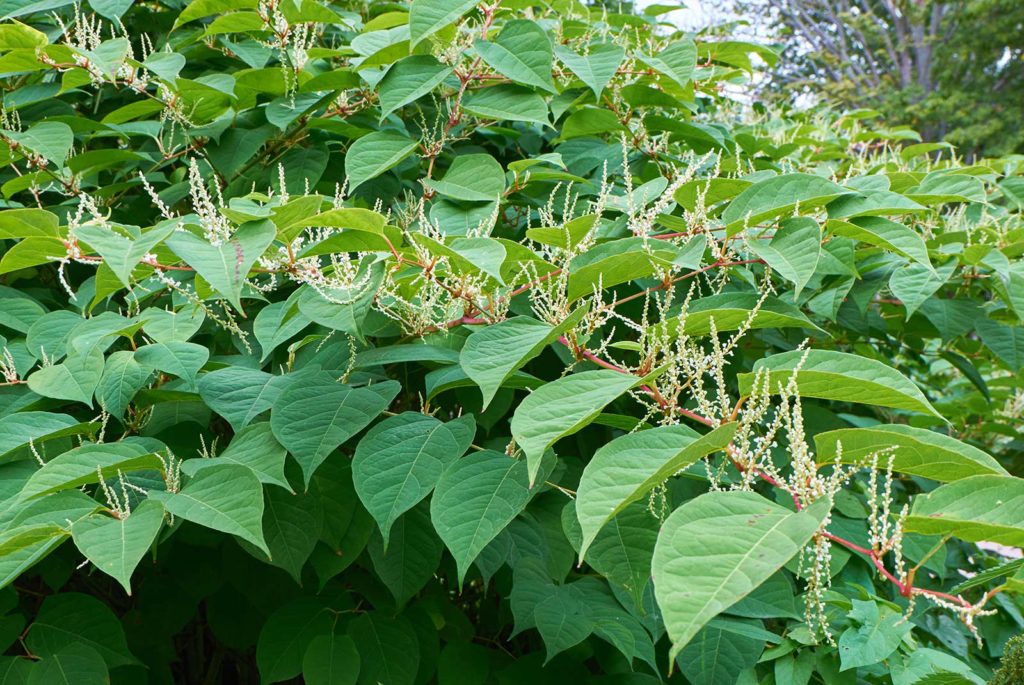Japanese Knotweed

Japanese knotweed (Fallopia japonica) leaves are curved, with a pointed tip and a flat-base. They are a lush green color and are arranged in a zig zag pattern. In summer, the plant forms a thick canopy 3 – 4m high and by early autumn, has produced many small, creamy-white flowers.
The mature stems are hollow, purple speckled and have nodes on them, like bamboo.
The roots can be up to 10cm thick, with white shoots. When cut, they are bright orange and snap like a carrot.
The above-ground plant parts are very frost sensitive and die back in late autumn, but the root system can live for many years.
Japanese knotweed grows so vigorously that it can push through tiny cracks in foundations, paving, and tarmac and cause massive structural damage to buildings. In the UK, people can be refused mortgages because the plant is on their property!
It has massive underground root (rhizome) system, much larger than what you see growing above the surface. It can survive lack of sunlight, drought and extreme heat. Mature plants grow into immense stands that block the growth of native species, severely reducing biodiversity. This species has spread throughout Ireland extremely rapidly.
If you find Japanese knotweed, DO NOT CUT OR BREAK it! Stem and root fragments can easily regrow as new plants.
DO NOT TRANSPORT Japanese knotweed anywhere. It is illegal to move knotweed waste except to bring it to a licensed waste facility that has been given prior notification.
Any eradication or control of Japanese knotweed must be undertaken by a reputable invasive species control company. Poorly planned treatments will increase the plant’s resistance to future control methods!
If you encounter Japanese knotweed please enter the details into our log.
